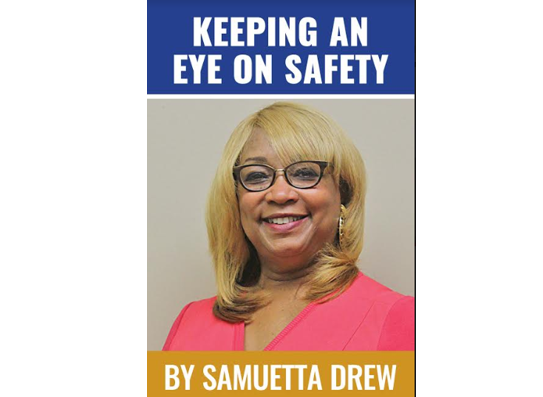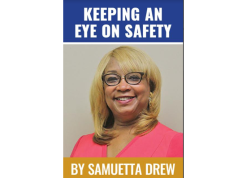By Samuetta Hill Drew
Spring of 2019 is just a few short weeks away – March 20th. Spring is a majestic season. It’s the season when the earth paints its landscape like an artist painting a masterpiece. Earth begins to awaken from the cold of winter and starts a seasonal rebirth with the beautiful shades of colored flowers bursting through the soil, green grass leaping toward the sun and green leaves sprouting out on barren tree limbs – home to different species of birds that can be often heard singing hello to spring. Yes, spring is a time for rebirth and revitalization for us all, but spring can sometimes be bitter-sweet. It also brings with it heavy rain, severe thunderstorms, lightning, and high winds. These latter acts of nature can be very destructive and unfortunately sometimes costly relative to personal property and even lives.
This is the first in a three- part series focusing on safety driving tips during inclement and/or different severe weather conditions. Also discussed will be facts and myths about various driving strategies. The importance of this series is two-fold. Geographically we live in a region of the country meteorologists refer to as “Dixie Ally” meaning we are prone to severe weather conditions. Also, most Alabamians drive everywhere, since mass transportation for the most part, is nonexistent. Time needs to be given to adequately explore best driving practices when different weather conditions are not ideal.
The best starting point is to begin with proper preparations before the onset of inclement and severe weather. It is vital you have a clear understanding of the differences between a severe weather watch and warning. Most understand, but let’s review for the sake of safety.
Severe weather watches, when issued, mean you should be on alert for the possibility of inclement or severe weather. It means the weather conditions are favorable for severe weather. Remember if you can hear thunder, you are close enough to the storm to be struck by lightning.
Severe weather warnings, when issued, mean severe weather has been seen and is moving toward your direction. Severe weather can travel very quickly so you will need to take precautionary action IMMEDIATELY!
Before starting your journey during inclement weather, make sure you are aware of the weather predictions for the day and stay alert because conditions can change. It is crucial you know the weather for the county in which you live or nearby counties you may be traveling to. Severe weather warnings and watches are issued by county.
Knowledge is the first safety step to Keeping an Eye on Safety. Next week we will review safety tips for driving during heavy rain and thunderstorms.





